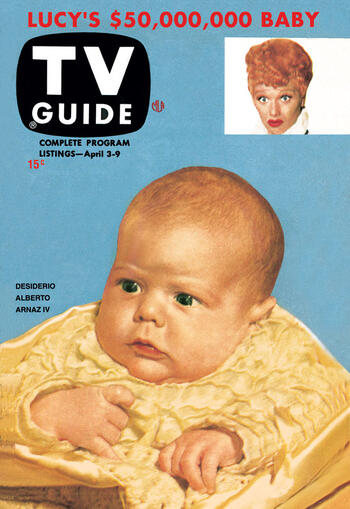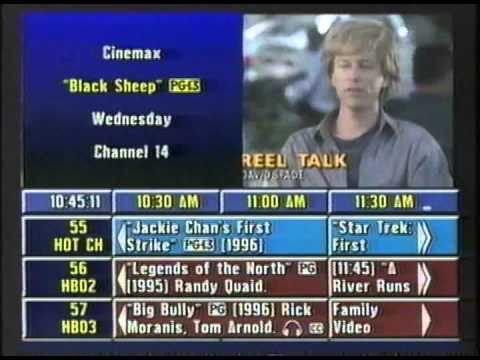Believe it or not, an onscreen, scrolling guide channel used to be a selling point. An even bigger selling point was a guide built right into the TV. Before that, the best way to get TV listing was (gasp) a printed publication that sat on the coffee table called TV Guide. At one time it was among the most popular magazines in America.
Yes kids, that’s how we did it.

TV Guide started publishing nationally in 1953, and rode a wave of popularity as families fell in love with TV for the first time. The very first issue featured the most popular baby in the world at that moment, Desi Arnaz, Jr. Lucille Ball and Desi Arnaz, Sr. were the king and queen of television, and the episode where Lucy gave birth (without ever explaining how it was done) caught the public’s attention.
TV Guide was a must-have in the mid-century home alongside the TV tray and TV dinner. The entire TV lifestyle seemed incredibly modern back then. And a guide was essential. Remember that until the 1970s there was no way to record a TV show. If you missed it, you had to wait until the summer to see it again.
The magazine’s parent company, Triangle Publications, was one of the most important companies in the world for a while. Led by wealthy magnates like Walter Annenberg, the little publishing house influenced diplomats and celebrities in equal measure. By the time Ronald Reagan, the first President with a career in TV, was elected, Annenberg himself was a valuable advisor to the White House. All, it would seem, because of a little book that told you what was on.
The TV Guide Channel

The TV Guide Channel started out humbly but gained a spot in every cable company, it would seem. Originally, it was not called “the TV Guide Channel” since it was owned by a different organization. But in 1998, United Video Satellite Group bought the TV Guide Channel. No one really cared because they’d been calling it the TV Guide Channel the whole time anyway.
Consumers loved the always-on, scrolling guide channel. They saw the channels you got in an easy-to-read format, it was never perfect. With a typical 80-channel cable TV system it could take 4 minutes to scroll from top to bottom (and there was no way to change the speed.) That’s too long to figure out what you’re going to watch next when one program ends and another’s about to begin. And remember folks, this was before DVRs… if you missed the beginning then you missed the beginning.
End of the TV Guide Channel
By the mid-2000s there were truly interactive guides in most cable and satellite boxes and that made the TV Guide channel obsolete. The built-in versions on TVs no longer needed the “TV Guide” label – guide data built into every broadcast made it easy for TV makers to build an interactive guide (although in practice most didn’t and still don’t.)
And so, by the ’10s it became pretty obvious that the writing was on the wall for both the print and scrolling versions of TV Guide Channel. It’s since been replaced by the general entertainment-oriented “TVG” channel but the the first big step toward that was back in 2012 when the owner of the TV Guide service stopped it. The change was instant in TVs that relied on TV Guide for data. It took a few more years for the channel listings to stop on cable and satellite providers.
The surprising success of Pop TV

The TVG channel gave way to Pop, and for the most part no one cared. That is, until the network picked up the little-known Canadian sitcom Schitt’s Creek. It seemed like quite a long shot. The show featured stars past their prime and a silly premise. Of course, we all know what happened to that show. And it probably wouldn’t if TV Guide still published.



